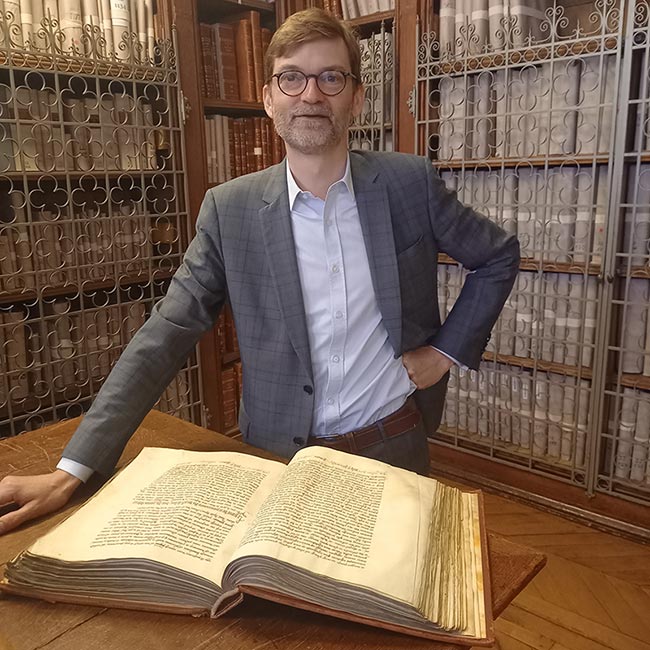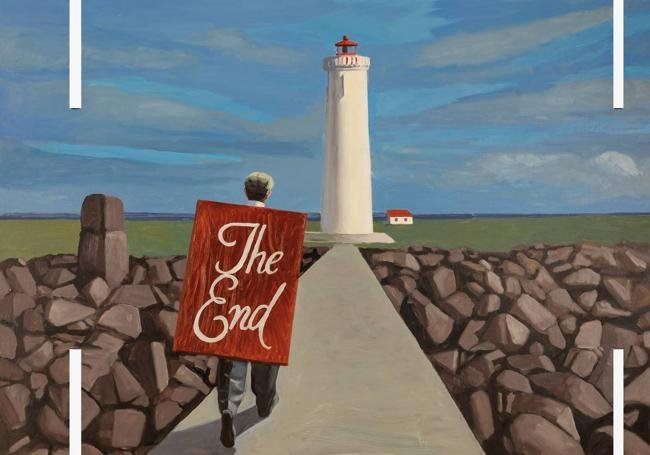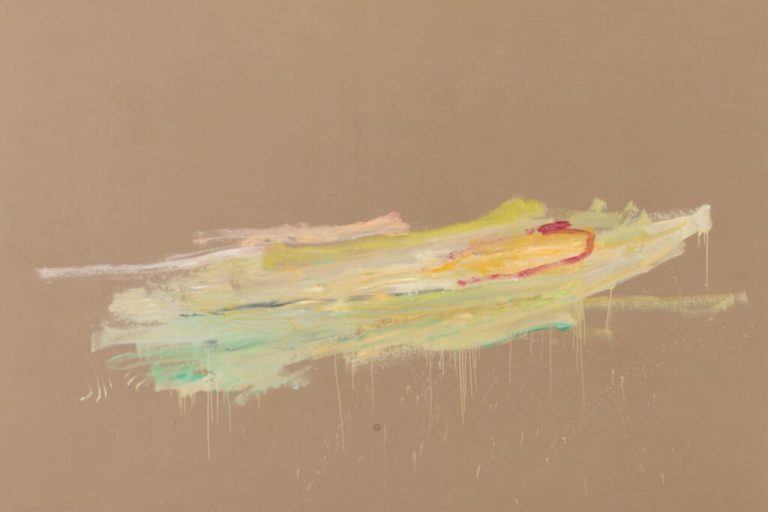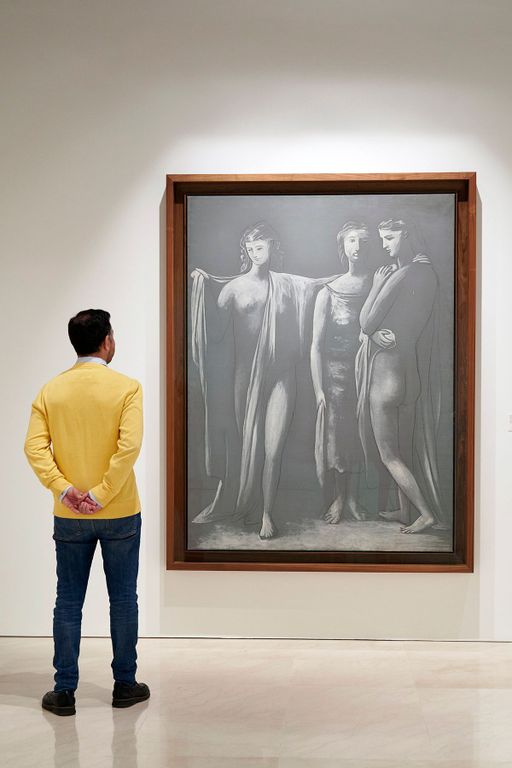You distinguish, in the exhibition, sacrilege from blasphemy, a separation which was only made from the 12th century: blasphemy concerns words, sacrilege, acts against religion…
At the end of the Middle Ages, sacrilege was in fact restricted to physical attacks against objects and buildings of worship. But the concept remains used in a broader sense, in conversations and in society in general. For example, in the letters of remission sent to the king to ask to be pardoned for a crime committed, the supplicant often says that his victim was a horrible blasphemer, who spent his time swearing against God and the Virgin. In a deeply religious society, blasphemy is omnipresent, especially in swearing. But ultimately it is rarely condemned, unless it has political connotations or is associated with heresy, as in the case of the Cathars and Protestants. There are few convictions for blasphemy in the archives of the 16th and 17th centuries, and there are nine death sentences for blasphemy and sacrilege in the 18th century in the jurisdiction of the Parliament of Paris (which covers two-thirds of the kingdom), most often associated with other charges. The last and most famous victim was the Chevalier de La Barre, beheaded in 1766.
Why is the term “iconoclasm” less present throughout the course?
Iconoclasm is sacrilege in the strict sense of the term. We show an example of this with the sacking of the cathedral of Lyon (1562), a sacking which was preserved, if I may say so, because the statues were not replaced. It is a way of preserving the traces of this iconoclastic wave which was extraordinarily violent in the 1560s. It is contemporary with the first royal desecration, when Protestants entered the Notre-Dame de Cléry basilica and desecrated the tomb of Louis XI the same year. Then came the desecration of the tombs of the kings of France at the Saint-Denis basilica (1793) and the destruction of the gallery of the kings of Judah above the portals of Notre-Dame de Paris (1793-1794).
How did you distribute the religious works or documents with the judicial and political archives?
I didn't really ask myself this question… On the other hand, I took care that there were not too many written documents, which would be painful for visitors to read in the dim light of the exhibition. I really wanted the works to respond to the documents, and vice versa, because the exhibition deals with the links between religion and politics, the sacred and the state. For example, we show an oral bull from Clement IV asking Saint Louis to moderate his severity towards blasphemers, and we illustrate it with reproductions of stained glass windows from the Sainte Chapelle. Saint Louis wanted to purify the kingdom of France with a zeal considered excessive, after his return from the crusade (1254). The temporal and the spiritual are linked since Louis IX is part of the continuity of the priest-kings of the Old Testament: the stained glass windows illustrate the struggle of the kings of Israel and the prophets against idolatry. We see the Hebrew people engaging in residual pagan practices, condemned by the prophets. Finally, the exhibition presents some exceptional pieces, including the shrine of Saint Stephen (12th century) and the head of King David from the gallery of the kings of Judah at Notre-Dame.
What are the scenography choices, which stand out in the black walls and inscriptions that punctuate the route?
Several documents are old and fragile, which required strict compliance with conservation standards, as part of a scenography that plays on the contrasts between darkness and light. The words written on the walls constitute “the murmur of blasphemy and sacrilege”, according to the scenographers, like a red thread throughout the journey: we read the words “lèse-majesté, profaner, iconoclast, vandal, deicide…” So many terms used in indictments and in legal vocabulary over time.
From the 18th century and the Revolution a sort of Pantheon of Republican martyrs was formed. Who are the main figures?
This was done in two stages. First the French Revolution, with Marat assassinated by Charlotte Corday, and the soldier Joseph Bara, killed by the Vendéens in 1793 at the age of fourteen. As early as 1794, a bust of the teenager, in terracotta, was made by the Sèvres factory: a very beautiful work that we are exhibiting next to a small painting by Jean-Jacques Henner (1829-1905) where Bara is represented both as an ancient hero and as Christ: a naked young man with a knife in his hand. This corresponds to the second phase of this phenomenon, with a reactivation of these martyred revolutionary figures in the 1880s, when we began to talk in France of the separation of Church and State. There is obviously Léon Gambetta, whose heart was placed in the Pantheon on November 11, 1920 as a true republican relic. His eye, preserved in a glass bottle, is presented in the exhibition [ndlr : Léon Gambetta s’est fait retirer son œil blessé en 1867]. We even organized “pious pilgrimages” in front of his home! This transfer of sacredness shows that we did not change categories of thought after the end of the monarchy. And, implicitly, the question of a totally desecrated power arises: is this desirable? Because secularization does not necessarily mean desacralization, we can make values or concepts sacred.
René Ferracci, poster for the film by Jacques Rivette Suzanne Simonin, Diderot's Nun1967 ©
© French Cinematheque
Among the developments that you highlight, we note the sacralization of religious heritage in the middle of the 20th century, as well as that of the memory of the Great War…
Yes, from the 1960s and 1970s we saw the emergence of a discourse on the protection of religious heritage in France, following the excesses of the most progressive fringe of the clergy after the Second Vatican Council. And it is the Ministry of Culture which is concerned about it, which is quite paradoxical. There were several cases of vandalism of religious property in the 1970s, provoking many reactions. At the same time, we are seeing heritage protection laws emerge. And as for the memory of 1914-1918 and the deaths for France, it is established as a sacred value within the broader framework of an evolution of the work of memory. But everything does not work in the same way: the memory of the First World War touches many people, undoubtedly more than that of the Resistance which nevertheless has a consensus at the national level. And since the end of the 20th century, we have witnessed a resurgence of civic liturgies, with the recent pantheonizations, and even before, with the creation in 2003 of the offense of insulting the national anthem and the flag (after an incident during the French Football Cup in 2002). The Constitutional Council has limited its scope, so it is still authorized to burn a French flag in a political demonstration. We have also noted increased public sensitivity to acts of vandalism or looting of heritage sites, as we saw in 2018 during the ransacking of the Arc de Triomphe during a Yellow Vest demonstration. The Yellow Vests themselves were shocked, and these events aroused great emotion throughout France. This is a photograph of the shattered plaster cast of the genius of war [ndlr : copie qui se trouvait à l’intérieur de l’Arc de triomphe] which we chose for the cover of the exhibition catalog, because it is halfway between politics and religion.
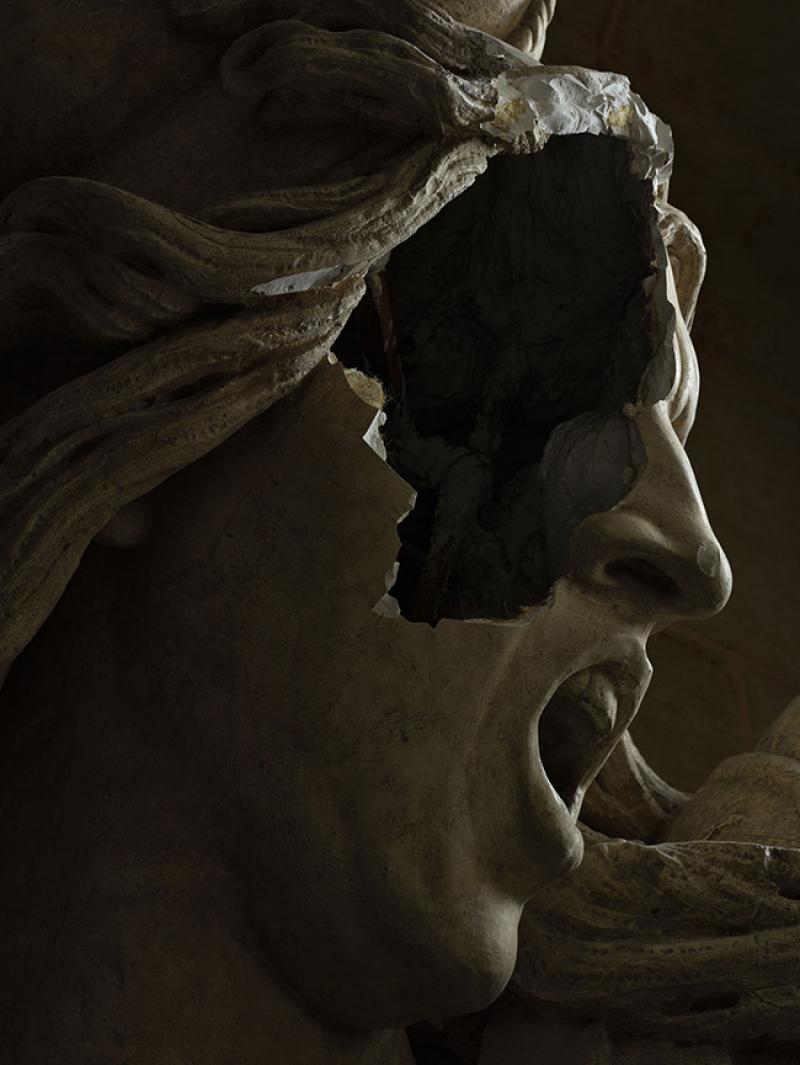
Cast of the genius of the War by François Rude, vandalized during a Yellow Vest demonstration on December 1, 2018.
© Benjamin Gavaudo / Center of National Monuments
How do you analyze actions against works of art by environmental activists? Is this a question of desecrating sacred objects in museums?
I place these events in the context of a society that has become both multicultural and individualistic, where everyone is free to create their own system of values. Thus, what is sacred for some is secondary for others. The approach of these activists consists of saying “our priority is to save the planet”: it is a hierarchy of values, different from that of other social groups. These young people attack works often protected by glass, so it is a transgression, but only to the point where it becomes ineffective for their cause. It is interesting to note that from now on, it is this mode of action that is favored, and no longer demonstrating topless in churches.

